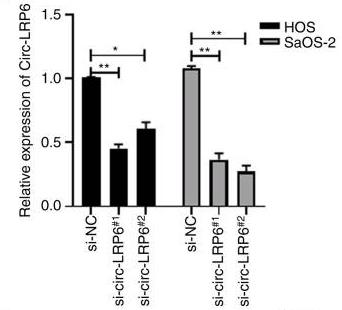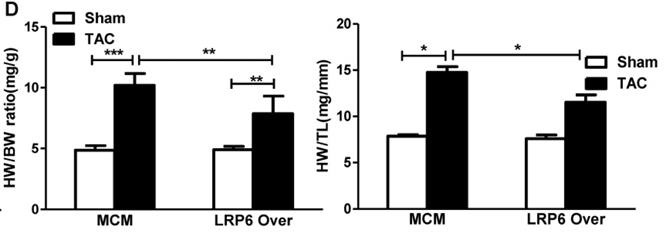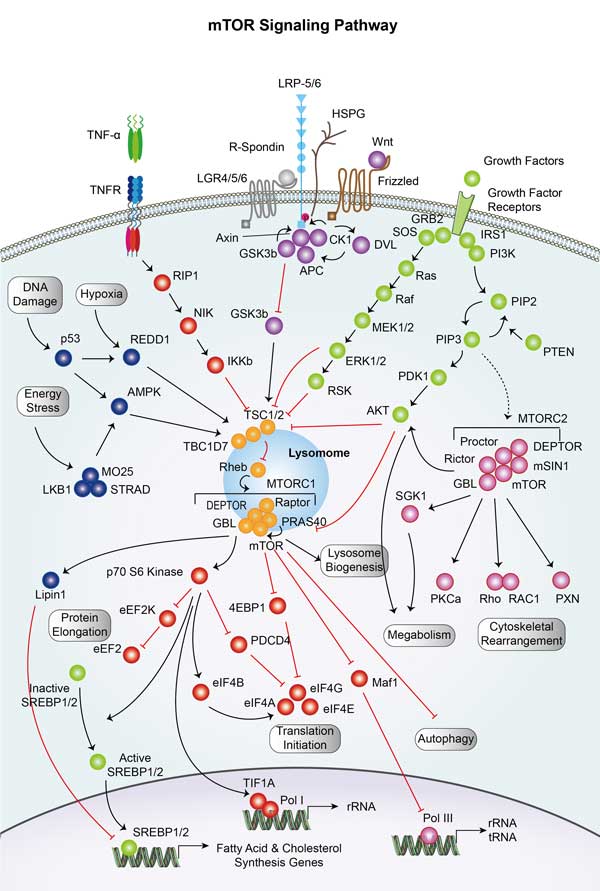LRP6
-
Official Full Name
low density lipoprotein receptor-related protein 6 -
Overview
LRP5 and LRP6 are single-pass transmembrane proteins belonging to the low-density lipoprotein receptor (LDLR)-related protein family. Unlike other members of the LDLR family, LRP5 and LRP6 have four EGF and three LDLR repeats in the extracellular domain, -
Synonyms
LRP6;low density lipoprotein receptor-related protein 6;low-density lipoprotein receptor-related protein 6;LRP-6;ADCAD2;FLJ90062;FLJ90421
Recombinant Proteins
- Human
- Mouse
- Rhesus macaque
- Zebrafish
- E.coli
- Mammalian Cells
- HEK293
- His
- Fc
- Non
- DDK
- Myc
- Avi
- mFc
- Flag
Background

Fig1. A diagram of the structure of LDLR and LRP6. (Sheng Kang, 2020)
What is LRP6 protein?
LRP6 gene (LDL receptor related protein 6) is a protein coding gene which situated on the short arm of chromosome 12 at locus 12p13. This gene encodes a member of the low density lipoprotein (LDL) receptor gene family. LDL receptors are transmembrane cell surface proteins involved in receptor-mediated endocytosis of lipoprotein and protein ligands. The protein encoded by this gene functions as a receptor or, with Frizzled, a co-receptor for Wnt and thereby transmits the canonical Wnt/beta-catenin signaling cascade. Through its interaction with the Wnt/beta-catenin signaling cascade this gene plays a role in the regulation of cell differentiation, proliferation, and migration and the development of many cancer types. The LRP6 protein is consisted of 1613 amino acids and LRP6 molecular weight is approximately 180.4 kDa.
What is the function of LRP6 protein?
The LRP6 protein is a receptor expressed on the cell surface and belongs to the low-density lipoprotein (LDL) receptor superfamily. LRP6 is essential for activating the Wnt/β-catenin signaling pathway, which plays a regulatory role in a variety of biological processes such as cell proliferation, differentiation, migration, cancer metastasis, and embryonic development. In humans, overexpression and mutations of LRP6 are associated with a variety of complex diseases, including high blood pressure, atherosclerosis, and cancer. Therefore, the function of LRP6 in development and human disease, as well as its interactions with Wnt inhibitors such as DKK1 and SOST, are the focus of current research. The structure and function of LRP6 are critical to understanding its role in multiple biological processes and could be a potential target for the treatment of related diseases.
LRP6 related signaling pathway
The LRP6 protein is a cell surface receptor that is critical for activating the Wnt/ beta-catenin signaling pathway. This signaling pathway plays a regulatory role in many biological processes such as cell proliferation, differentiation, migration, cancer metastasis and embryonic development. Together with the Frizzled receptor, LRP6 acts as a co-receptor of the Wnt signaling pathway. When the Wnt ligand binds to this receptor complex, it initiates a series of downstream events leading to the accumulation of β-catenin in the cytoplasm and its entry into the nucleus, thereby regulating the expression of a series of genes. The activity of LRP6 is regulated by a variety of inhibitory proteins, including DKK1, SOST, Wise and ZNRF3. These Wnt antagonists affect Wnt signaling by regulating the activation of LRP6.

Fig2. Diagram of known LRP6 SNPs in various diseases. (Z-M Wang, 2018)
LRP6 related diseases
Abnormal function of LRP6 has been associated with a variety of diseases, including atherosclerotic diseases, abnormal dental development, metabolic syndrome, cardiovascular disease, and many cancers, such as bladder and breast cancer. In addition, LRP6 has been identified as a nutritional therapeutic target for hyperlipidemia, non-alcoholic fatty liver disease, and atherosclerosis, and its extensive role in human disease has made it a hot spot for biomedical research, providing a potential target for future therapeutic strategies.
Bioapplications of LRP6
As a key component of Wnt signaling pathway, rhLRP6 plays an important role in regulating cell proliferation, differentiation, migration and embryonic development. In biomedical research, rhLRP6 has been used to explore the mechanisms of action of the Wnt signaling pathway in a variety of diseases, including cancer, neurodegenerative diseases, and cardiovascular diseases. rhLRP6 is also a potential target for drug development to screen and evaluate small molecule drugs and biologics capable of regulating Wnt signaling pathways. In terms of clinical application, RHLRP6-related biologics may help treat diseases associated with dysregulation of Wnt signaling, by regulating this critical signaling pathway to achieve disease treatment and prevention.
Case Study
Case Study 1: Yali Yu, 2022
This study investigated the role of circular RNA lipoprotein receptor 6 (circ-LRP6) in osteosarcoma (OS), a function that is well-established in other cancers but not fully understood in OS. Researchers measured the levels of circ-LRP6, miR-141-3p, HDAC4, and HMGB1 in OS tissues and cell lines. They used various assays to assess cell behavior and molecular interactions. circ-LRP6 is overexpressed in OS and suppresses miR-141-3p, which in turn controls HDAC4 and HMGB1. Knocking down circ-LRP6 reduced OS cell proliferation, migration, and invasion, effects that were partially reversed by inhibiting miR-141-3p or overexpressing HDAC4 or HMGB1.

Fig1. Comparison of overall survival in patients with high and low expression of circ-LRP6.

Fig2. Expression levels of circ-LRP6 in the transfected OS cells were analyzed by reverse transcription-quantitative PCR.
Case Study 2: Xiang Wang, 2021
This study focused on the role of LRP6 in cardiomyocytes during heart failure. The increasing LRP6 in these cells after aortic constriction improved heart function and reduced hypertrophy and fibrosis by inhibiting β-catenin and Wnt5a/Wnt11. LRP6 also interacted with the protease CTSD to degrade these Wnt proteins, preventing heart damage. Inhibiting this interaction or mutations in LRP6 and CTSD worsened cardiac outcomes.

Fig3. Western blot analysis of p-LRP6 and LRP6 levels in left ventricular tissues from mice at different time-points.

Fig4. Quantitative analysis of the ratio of heart weight/body weight (HW/BW) and heart/tibia (HW/TL).
Quality Guarantee
High Purity
.jpg)
Fig1. SDS-PAGE (LRP6-7875H)
.
.jpg)
Fig2. SDS-PAGE (LRP6-01H)
Involved Pathway
LRP6 involved in several pathways and played different roles in them. We selected most pathways LRP6 participated on our site, such as Wnt signaling pathway, which may be useful for your reference. Also, other proteins which involved in the same pathway with LRP6 were listed below. Creative BioMart supplied nearly all the proteins listed, you can search them on our site.
| Pathway Name | Pathway Related Protein |
|---|---|
| Wnt signaling pathway | GSK3B,WNT11R,PSEN1,WNT5B,SIAH1,GSK3AA,CCND3,FZD7,NLK,PLCB2 |
Protein Function
LRP6 has several biochemical functions, for example, Wnt-activated receptor activity,Wnt-protein binding,apolipoprotein binding. Some of the functions are cooperated with other proteins, some of the functions could acted by LRP6 itself. We selected most functions LRP6 had, and list some proteins which have the same functions with LRP6. You can find most of the proteins on our site.
| Function | Related Protein |
|---|---|
| apolipoprotein binding | LIPC,LPA,CANX,VLDLR,ABCA1,LRP4,MAPT,PCSK9,LPL,SCARB1 |
| protein binding | RAF1,RYBP,KIF5C,RASSF5,PPIL2,RIN3,STK10,F5,ATF4,UBE2N |
| Wnt-activated receptor activity | FZD1,FZD3A,Fzd4,FZD8,LRP5,FZD10,FZD8A,FZD7B,FZD2,FZD3 |
| low-density lipoprotein receptor activity | CXCL16,LRP12,VLDLR,LDLR,OLR1 |
| kinase inhibitor activity | RHOH,AHSG,SOCS1 |
| toxin transporter activity | SLC17A3,SLC22A3,ABCG1,SLC7A8,SLC22A2 |
| receptor binding | CSNK2B,TMEM38A,KCNJ10,UCN2,NPY,TENM2,RASA1,WNT2BA,FGF20A,MSTN |
| frizzled binding | CTHRC1,WNT6,WNT11R,RNF43,WNT8B,RSPO3,SFRP1,WNT8A,WNT5A,ROR2 |
| Wnt-protein binding | PORCN,APCDD1,ROR2,FZD9B,FZD8B,FZD1,FZD7A,GPR177,GM12824,FZD3A |
Interacting Protein
LRP6 has direct interactions with proteins and molecules. Those interactions were detected by several methods such as yeast two hybrid, co-IP, pull-down and so on. We selected proteins and molecules interacted with LRP6 here. Most of them are supplied by our site. Hope this information will be useful for your research of LRP6.
Fzd8;GSK3B;Axin1
LRP6 Related Signal Pathway
Resources
Research Area
Lipoprotein Receptors and Associated ProteinsCytokine and Growth Factor Receptors on VSMC
Related Services
Related Products
References
- Tella, SH; Gallagher, JC; et al. Biological agents in management of osteoporosis. EUROPEAN JOURNAL OF CLINICAL PHARMACOLOGY 70:1291-1301(2014).
- Qian, LL; Cai, CZ; et al. Bidirectional effect of Wnt signaling antagonist DKK1 on the modulation of anthrax toxin uptake. SCIENCE CHINA-LIFE SCIENCES 57:469-481(2014).



